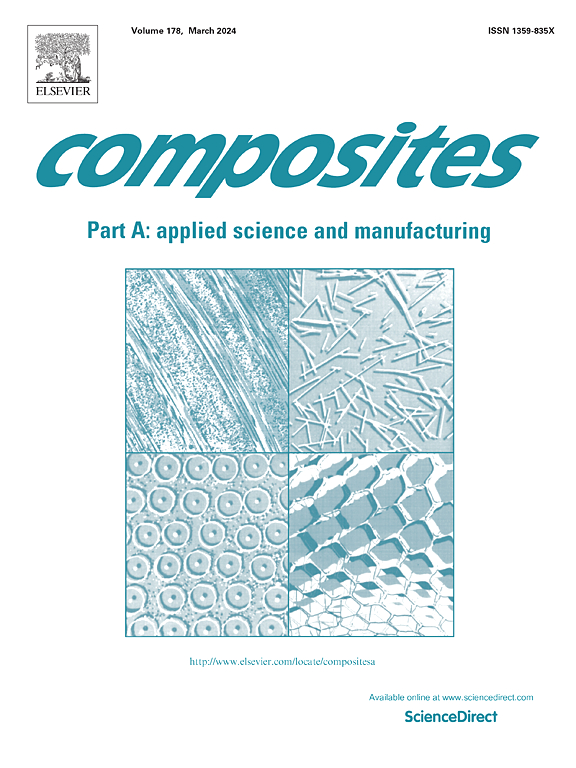Design of lossy dielectric polymer nanocomposite alternating A-B multilayers for absorption-dominated EMI shielding in the X-band regime
IF 8.1
2区 材料科学
Q1 ENGINEERING, MANUFACTURING
Composites Part A: Applied Science and Manufacturing
Pub Date : 2025-01-12
DOI:10.1016/j.compositesa.2025.108715
引用次数: 0
Abstract
The role of permittivity mismatch and of individual layer thickness on the electromagnetic interference (EMI) shielding performance of lossy dielectric polymer nanocomposite multilayer shields is explored via a combined theoretical and experimental approach. The A-B multilayer shields comprise of two or more alternating layers of low and high permittivity facilitated by alternating the filler concentration. A parametric study based on a transfer matrix model is conducted making use of permittivity measurement data on nanocomposites of poly(methyl methacryclate) (PMMA) with carbon nanotubes (CNTs). Theoretical insights are confirmed via an experimental and numerical finite element case study on PMMA-CNT A-B multilayer stacks in a waveguide. The case study highlights the trade-off between absorption-based shielding and high shielding effectiveness. For a given total shield thickness, the shielding performance becomes independent of the number of layers when the individual layer thickness is less than the skin depth of the composite material in the high permittivity layer. Moreover, to obtain absorption-based shielding, less but thicker layers, like a bilayer, can be advantageous. For instance, we demonstrate that a 4 mm thick bilayer with a 1 wt% to 7 wt% CNT concentration mismatch exhibits absorption-based shielding with a shielding effectiveness close to 40 dB within the X-band frequency regime.

求助全文
约1分钟内获得全文
求助全文
来源期刊

Composites Part A: Applied Science and Manufacturing
工程技术-材料科学:复合
CiteScore
15.20
自引率
5.70%
发文量
492
审稿时长
30 days
期刊介绍:
Composites Part A: Applied Science and Manufacturing is a comprehensive journal that publishes original research papers, review articles, case studies, short communications, and letters covering various aspects of composite materials science and technology. This includes fibrous and particulate reinforcements in polymeric, metallic, and ceramic matrices, as well as 'natural' composites like wood and biological materials. The journal addresses topics such as properties, design, and manufacture of reinforcing fibers and particles, novel architectures and concepts, multifunctional composites, advancements in fabrication and processing, manufacturing science, process modeling, experimental mechanics, microstructural characterization, interfaces, prediction and measurement of mechanical, physical, and chemical behavior, and performance in service. Additionally, articles on economic and commercial aspects, design, and case studies are welcomed. All submissions undergo rigorous peer review to ensure they contribute significantly and innovatively, maintaining high standards for content and presentation. The editorial team aims to expedite the review process for prompt publication.
 求助内容:
求助内容: 应助结果提醒方式:
应助结果提醒方式:


